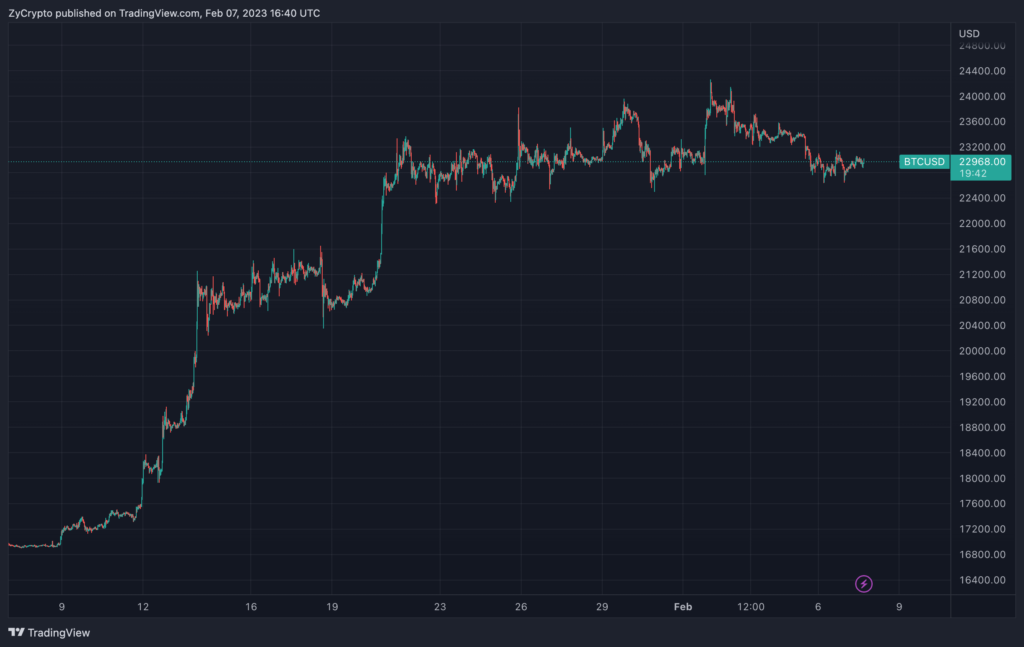- Bitcoin has entered the greed zone with the Fear and Greed Index at a 10-month high of 61, signalling a strong bullish sentiment.
- The recent change in investors’ sentiments comes following BTC’s price surge this year after months in the red zone.
- Experts share their opinions on the feasibility of BTC sustaining its recent price and how investors can predict if it is another bull trap.
After several months of fear around the prices of digital assets, investors are now beginning to look more confident in the prospects of Bitcoin (BTC) and other assets following price surges in the past two weeks.
Bitcoin’s Fear and Greed Index reached a 10-month high as it tapped 61 over the weekend, signalling a strong bullish sentiment in the market. As of Dec 2022, the index was at 25 showing intense fears from investors in the aftermath of the FTX implosion.
The recent uphill run in the market pushed the index to 52 on Jan 15, away from the fear zone, and it has stayed up since. The index hitting the neutral zone was the first time it escaped the fear territory in three quarters.
BTC currently exchanges hands at $23,005 at the time of writing, showing a price increase of over 40% since the start of the year. The surge has also been recorded in other digital assets, with the leading altcoin, Ethereum (ETH), also recording similar gains.
Bitcoin’s Fear and Greed Index optimizes social signals from various sources to determine the current market sentiment hovering around the asset. These signals to several traders indicate BTC going bullish (investors have gone greedy) or bearish ( investors are in fear). The index is made up of scores from 0-100, ranging from Extreme fear (Orange) to Extreme Greed (Green).
Can BTC sustain a bull run?
While the metric indicates that bulls are gearing up for another run, some commentators are still sceptical about the sustainability of such hopes. With a price of $23,005, Bitcoin has definitely made tremendous gains after the FTX saga, which saw it trade below $17,000.
If BTC and other digital assets are going on another bull run, a key factor is reduced inflation figures and interest rates. Last year inflation and wider macroeconomic factors led to a decline in the cryptocurrency market after several Central Banks raised interest rates to curb inflation.
The good news is that multiple governments are recording sliding inflation numbers which signals a turnaround in the digital asset market, but a possible bull run or bull trap still hangs in the balance.
Source: Read Full Article
-
Satoshi-Era Bitcoin Whale Moves $1.2 Million Worth Of BTC After 13 Years
-
BullFrog AI Surges Following License Agreement With Johns Hopkins University
-
Bitcoin Supply on Exchanges Hits Lowest Level in Over Five Years
-
$BTC: IIF’s Chief Economist Calls Bitcoin “Just Another Bubble Asset”
-
40,000 BTC from US Government Seizures in Motion: What Could It Mean for Bitcoin?


